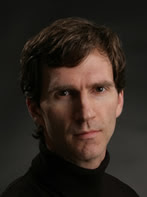I wrote a song called "Baby" over the weekend and I thought it might be insightful to record the revision process I went through between the song initially coming out and the final draft, which you can listen to a demo of here for reference.
Here are the lyrics as recorded:
Baby, I think I’m tired
Baby, I think I’ve tried to say that
I can’t stop thinking about
I can’t stop thinking about you
Baby, is it too late?
Baby, am I made to break?
Your heart all over again
It’s so hard just staying a friend
So don’t think it’s true baby
That everything is maybe in my heart
Is it wrong to think I’m wise
I’ve lived too long to be surprised that
I can’t stop hoping now
I can’t stop the way that I’m the way that I’m
Running away from the things that I can’t change
The way I’m trying to feel about half my age
So don’t think it’s true baby
That everything is maybe in my heart
Everything is maybe in my heart
and the form is intro-V1-V2-Riff-Refrain-Riff-V3-extension-Refrain-RepeatedLine-Riff-Outro
In the first verse, I made the following changes:
- 2nd line "tried to tell you" -> changed to "tried to say that" which seemed stronger
- originally the 3rd and 4th lines were just"I can't stop thinking now" twice which was a bit meaningless. I really wanted the song to have an optimistic edge and be more about falling in love than out of love so I added the "you" to "I can't stop thinking about... you" in the 4th line
- originally the verse had a 5th line similar in format to the end of verse 3. I cut it for conciseness.
- I'm still playing with the arrangement, but I opted to add a lower harmony to the 2nd line and a doubled higher harmony to the 3rd line where a piano, vibraphone, and accordion all play sparingly (A guitar and upright bass play from the beginning).
Verse 2:
- The 2nd line was originally "Baby, I think I'm made to break" and the 1st line was "Baby, I think it's late". These felt too weak despite their strong connection to the opening of verse 1. Instead, I used a timeworn strategy and changed them to questions which increased their impact.
Verse 3:
The 4th line was originally "I hope you'll see that I'm too blind to be ... " which I changed to "I can't stop that way that I'm the way that I'm". This meant I could use the repeated initial phrase "I can't stop" in both the 1st and 3rd verses making the 2nd line of the 3rd lead coda-like to the extension which is based on the refrain but adding more resolution (back to the tonic D) as well as a new passing chord sequence (Bm - A). I'm also playing with repetition at several levels - I've always been one to avoid repeating phrases but after working out songs like Company in My Back which is filled with repeats, I thought I'd try and borrow some of Mr. Tweedy's techniques - the held out initial words are similarly inspired by the video of "Sunken treasure" which is the initial point of departure for the song.
Thoughts of Sam Larkin
-
A lot of people are walking around ina daze saying Sam, gone? Really? For
two days I was hoping it was a joke. Asked Bob. He said no joke. Dang,
itwould h...
11 years ago

